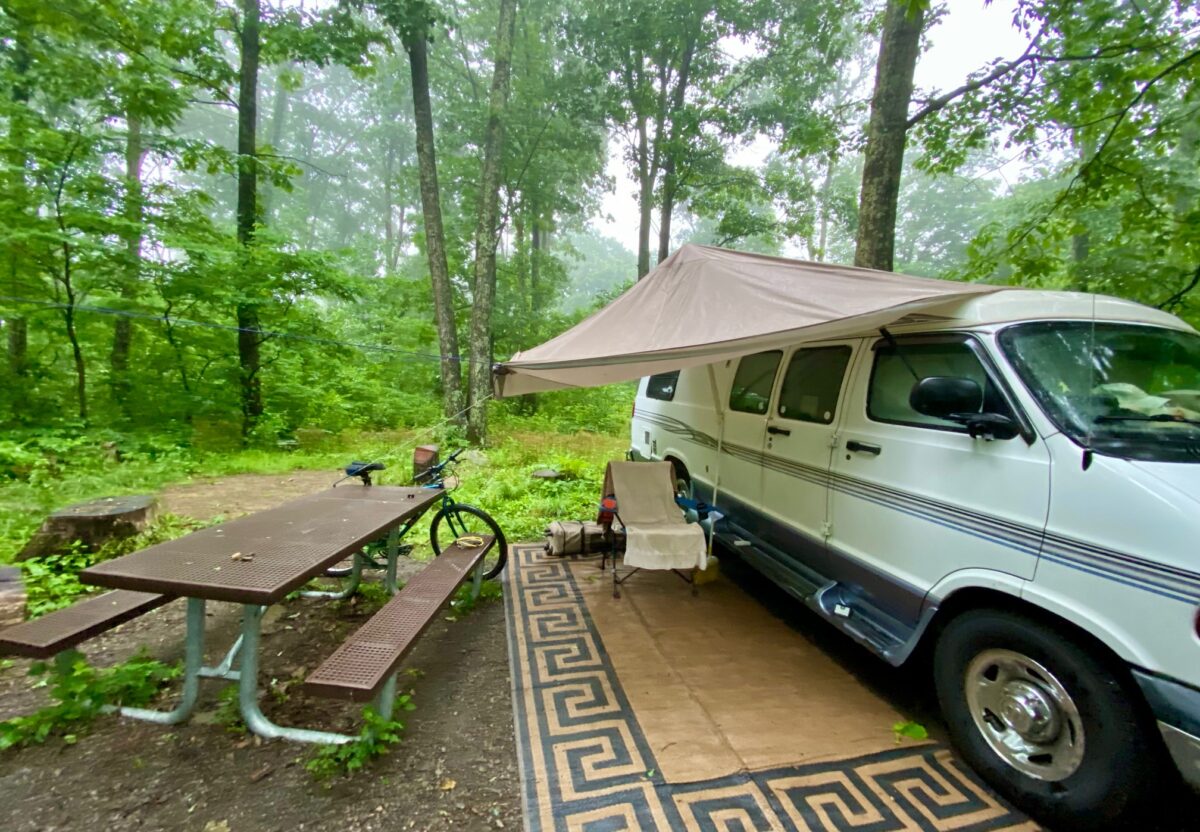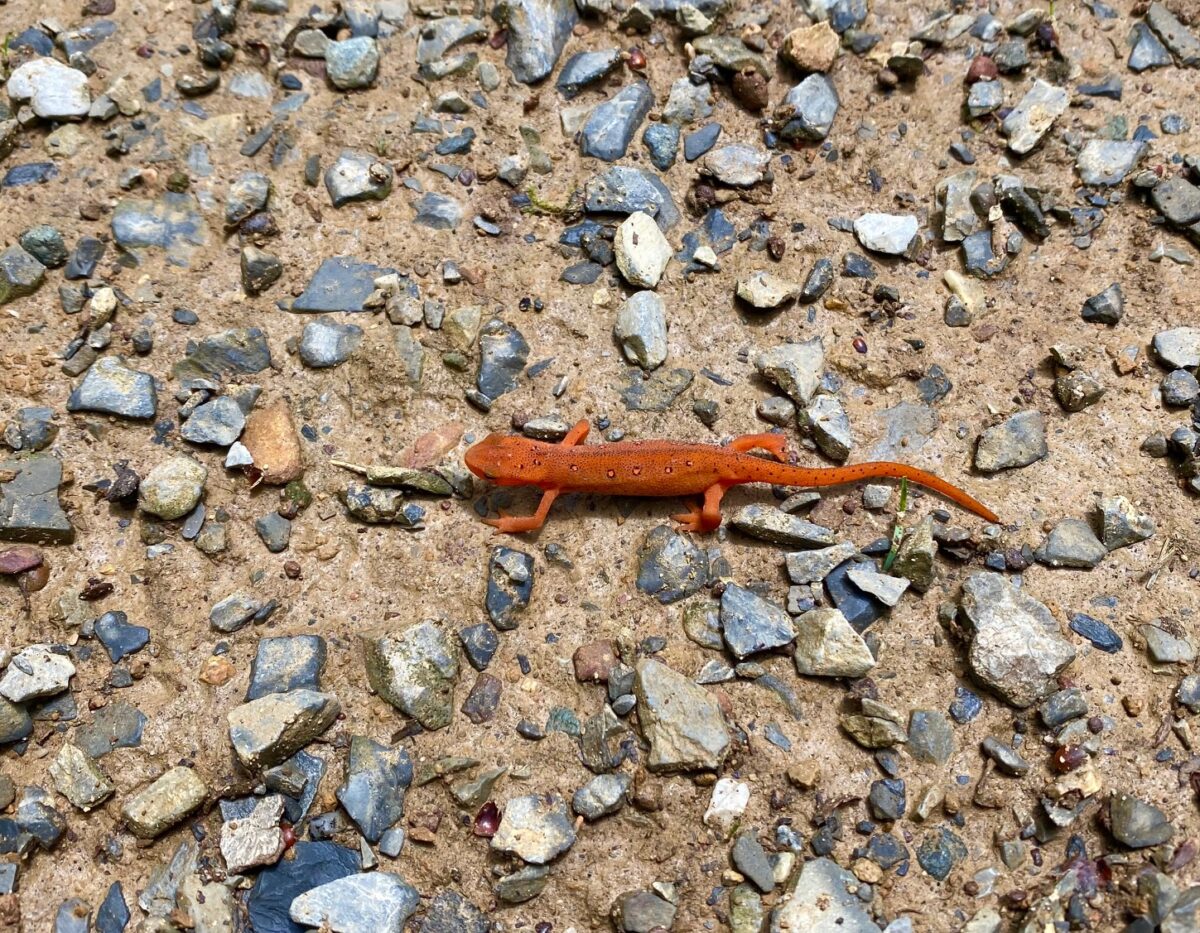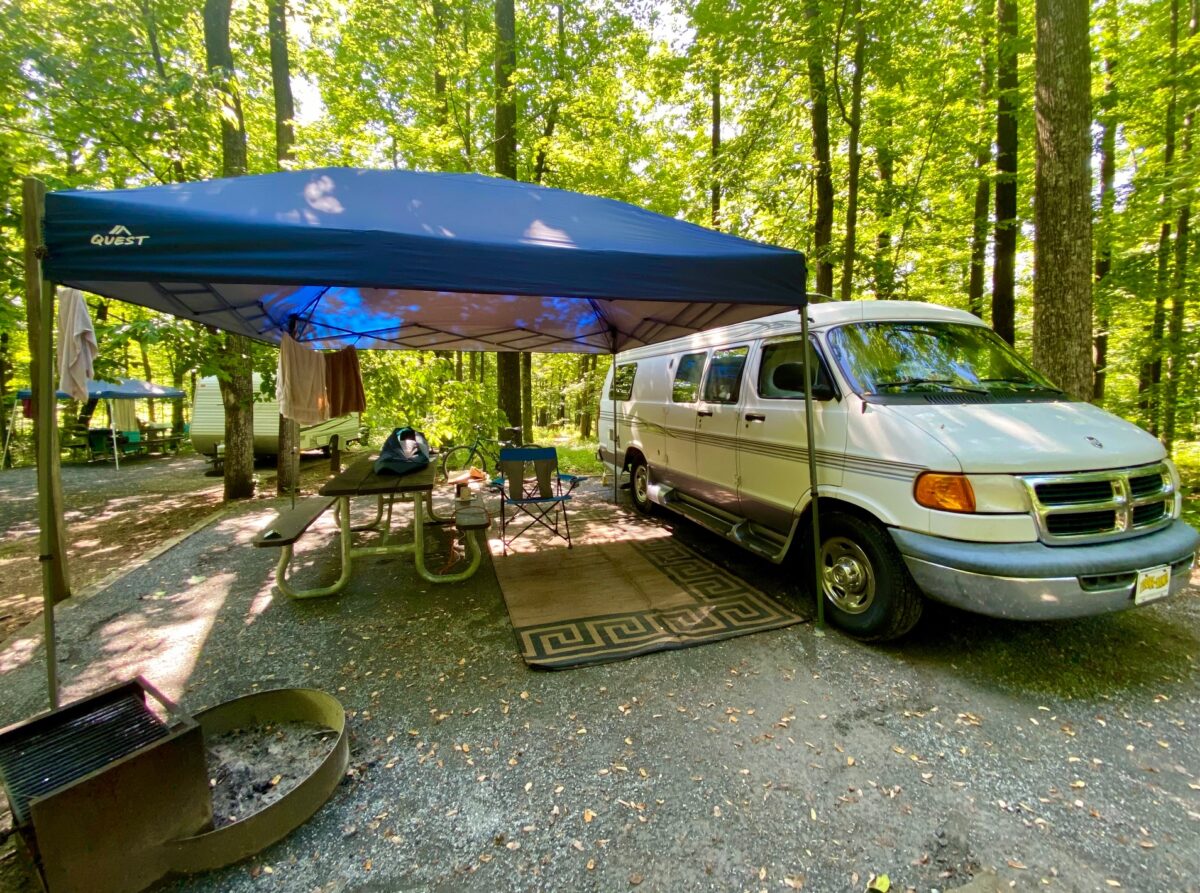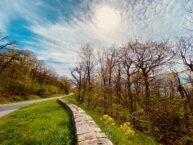
A prime summer campsite in Mathews Arm Campground at about 2,800 feet above sea level in Shenandoah National Park: Glynn Wilson
Secret Vistas –
By Glynn Wilson –
Abandoning the cities and suburbs for a camper van or other type of Recreational Vehicle in nature is becoming a reality for hundreds of thousands of people, and not just because of the coronavirus pandemic, the changing climate and economy and the movie Nomadland.
It doesn’t have to be a sad story like the movie, in fact. There is an incredibly positive aspect to this new trend in changing lifestyles in this fast changing world.
Bob Wells, the camping guru of the West, has been advocating this change in lifestyle for years out in the great expanses of the American West, where free and cheap camping land is abundant. He pitches “Cheap RV Living” for the economic advantages, the freedom and independence, the qualify of life in the outdoors, the healing from being closer to nature, and the community one can find with kindred souls, disenchanted with the materialistic nature of modern life.
But there is way more to this story than that.
There is a hidden story right here in the Eastern United States, a story of a land far less vulnerable to the vicissitudes of climate change than the West. As we speak there is a heat wave going on out West, with temperatures approaching 120 degrees even in Colorado. While a severe drought grips much of the West, bringing a hellscape of wildfires, rain fall in the east is steady or even on the upswing.
While the cities on the Eastern Seaboard will bake in the summer heat and Atlantic and Gulf of Mexico coastal areas will face the increasing threat of hurricanes and rising seas, there is a secret vista zone at higher elevations in the Appalachian mountain ridges away from the coasts and major cities.
From the Great Smoky Mountains between North Carolina and Tennessee, to the mountains in Virginia called Shenandoah and the George Washington National Forest, onto the Catoctin Mountains in Maryland to the Catskills in New York state, there is a survival zone that is still close enough to the power centers between Washington, D.C. and New York where people can live safely yet still remain close enough to the power centers to make a difference.
The mission that is missing from the great American escape out west is the role we must all play from this day forward to save American democracy and keep life livable on planet Earth for human beings, Homo sapiens.
We took over this planet 300,000 years ago from Homo Erectus and the wooly mammoths and marched our way from hunting and gathering on the African Savannah to counting trillions in gold in the sky scrapers of New York, with the power to dominate everything in sight and decide who and what lives and dies.
With this power should come the responsibility not only to protect every thing else that lives here, like the bears, deer and salamanders of Shenandoah.

The Eastern newt, red-spotted newt, a.k.a. the red eft (Notophthalmus viridescens), discovered hanging out on the edges of the tent pad for the site pictured in the photo above: Glynn Wilson
We have a fundamental responsibility to do everything in our power to keep life livable for us on this blue orb. That fact must become front and center in everything we talk about from now on. If it is not, we can kiss it all goodbye. We will continue to devour most of the life here, including our own.
If there are any other writers, journalists, or scholars who know this, they are not talking about it, at least not publicly. It is being kept a tight little secret for the moneyed b-b-bastaads who got us into this difficult spot.
Think about this.
What if the people of Virginia and the United States had not set aside the 200,000 acres of Shenandoah National Park for protection from private development? What do you think Skyline Drive would look like today, and who do you think would be living and playing there? Not the average American working family, paying anywhere from $7.50 to $20 to camp for the night and enjoy the natural environment there. It would be an overdeveloped, high-priced gated community surrounded by the world’s most gaudy tourist trap.
The poor and people of color would not be able to get anywhere near it, except to earn a minimum wage of $7.25 an hour to cook for and clean the houses, lodges and lands of the American equivalent of kings and queens of capitalism, and take out all their plastic garbage and wasted food.
It might come to that yet, but not if I have anything to say about it, or you dear reader.
The more I study and ponder this situation and see it up close and personal, the more I think we need to begin organizing a movement to protect this region for the safe haven it is going to become whether or not we like it or realize it yet.
The first thing we need in this mission is factual information.
If half the country or more chooses to ignore the facts about these trends, that will have to be at their peril and that of their ancestors. There will be winners and losers in this struggle for survival. The people with the best information will inevitably win out in the end — and those who work together altruistically from this day forward.
It’s going to take a heroic effort, but we must fight back against the selfish gene, and recruit others to build a community to join in this paramount cause.
I am working on a plan. This may involve creating a new Facebook group. Stay tuned.














